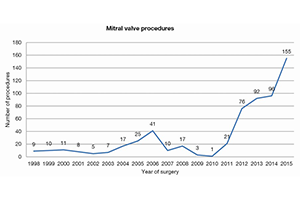The state of robotic cardiac surgery in Europe
Abstract
Background: In the past two decades, the introduction of robotic technology has facilitated minimally invasive cardiac surgery, allowing surgeons to operate endoscopically rather than through a median sternotomy. This approach has facilitated procedures for several structural heart conditions, including mitral valve repair, atrial septal defect closure and multivessel minimally invasive coronary artery bypass grafting. In this rapidly evolving field, we review the status of robotic cardiac surgery in Europe with a focus on mitral valve surgery and coronary revascularization.
Methods: Structured searches of MEDLINE, Embase, and Cochrane databases were performed from their dates of inception to June 2016. All original studies, except case-reports, were included in this qualitative review. Studies performed in Europe were presented quantitatively. Data provided from Intuitive Surgical Inc. are also presented.
Results: Fourteen papers on coronary surgery were included in the analysis and reported a mortality rate ranging between 0–1%, revision for bleeding between 2–7%, conversion to a larger incision between 2–15%, and patency rate between 92–98%. The number of procedures ranged between 23 and 170 per year. There were only a small number of published reports for robotic mitral valve surgery from European centers.
Conclusions: Coronary robotic surgery in Europe has been performed safely and effectively with very few perioperative complications in the last 15 years. On the other hand, mitral surgery has been developed later with increasing applications of this technology only in the last 5–6 years.
Cover






